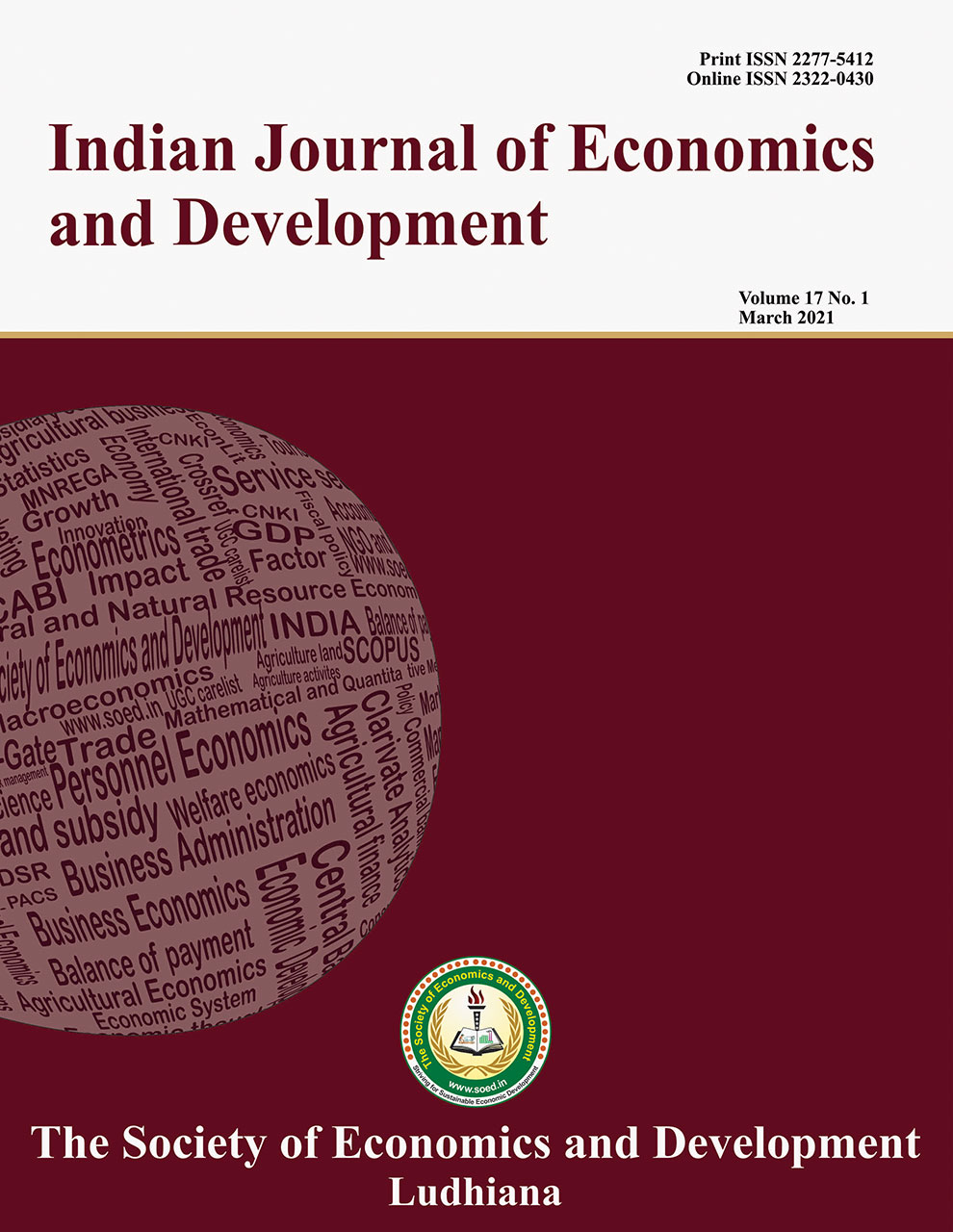Micro Financial Perspectives of Self-Help Groups from Disadvantaged Districts of Maharashtra

Price: ₹ 1000
Author: Sandeep Patil1 and Monica Singh2
Author Address: 1Subject Matter Specialist (Agricultural Extension), Dr. Balasaheb Sawant Konkan Krishi Vidyapeeth (DBSKKV), Krishi Vigyan Kendra, Ratnagiri-415629 (Maharashtra), and 2Subject Matter Specialist (Agricultural Extension), ICAR-CCARI-Krishi Vigyan Kendra, No
Keywords: Financial inclusion, microfinance, self-help groups, sustainable development goals.
JEL Codes: B26, F65, G02, G21, G31.
Abstract
The present study was planned to determine the micro-financial perspectives of SHGs from disadvantaged districts in Maharashtra. A total of 40 SHGs from two disadvantaged districts were selected using a disproportionate random sampling method. The data were collected from SHGs by personal interview method. The study revealed that SHG members strictly adhered to the principle of Saving First and Credit Later. The cumulative savings of SHGs were `83,785. The sampled SHGs had mobilized their savings in the form of an internal loan. The need-based lending approach was used which ensured a cent percent loan recovery. The average loan borrowed by SHGs from banks was fairly high due to an affordable interest rate of 4.0 percent per annum charged by banks on external loans. However, SHGs had charged 1.00 to 2.00 percent monthly interest, it accounted annually 12 to 24 percent interest on the external loan while lending. This shortfall in lending microfinance may be overcome by organizing the sensitization program for SHGs. It was concluded that sampled SHGs adopted good microfinance management practices in disadvantaged districts of Maharashtra. Further, the SHG Bank Linkage programme was an effective intervention in economic upliftment and ?nancial inclusion for the bottom of the pyramid. This proven platform initially conceived for increasing the outreach of banking services among the poor which led to promotion of livelihoods and poverty alleviation. Further, the potential SHGs may be encouraged to graduate as members of farmers producers’ organisations/companies.
Description
Indian Journal of Economics and Development
Volume 16 No. 2, 2020, 247-255
DOI: https://doi.org/10.35716/IJED/18110
Indexed in Clarivate Analytics (ESCI) of WoS
Sandeep Patil1 and Monica Singh2
1Subject Matter Specialist (Agricultural Extension), Dr. Balasaheb Sawant Konkan Krishi Vidyapeeth (DBSKKV), Krishi Vigyan Kendra, Ratnagiri-415629 (Maharashtra), and 2Subject Matter Specialist (Agricultural Extension), ICAR-CCARI-Krishi Vigyan Kendra, North Goa, Ella-403



